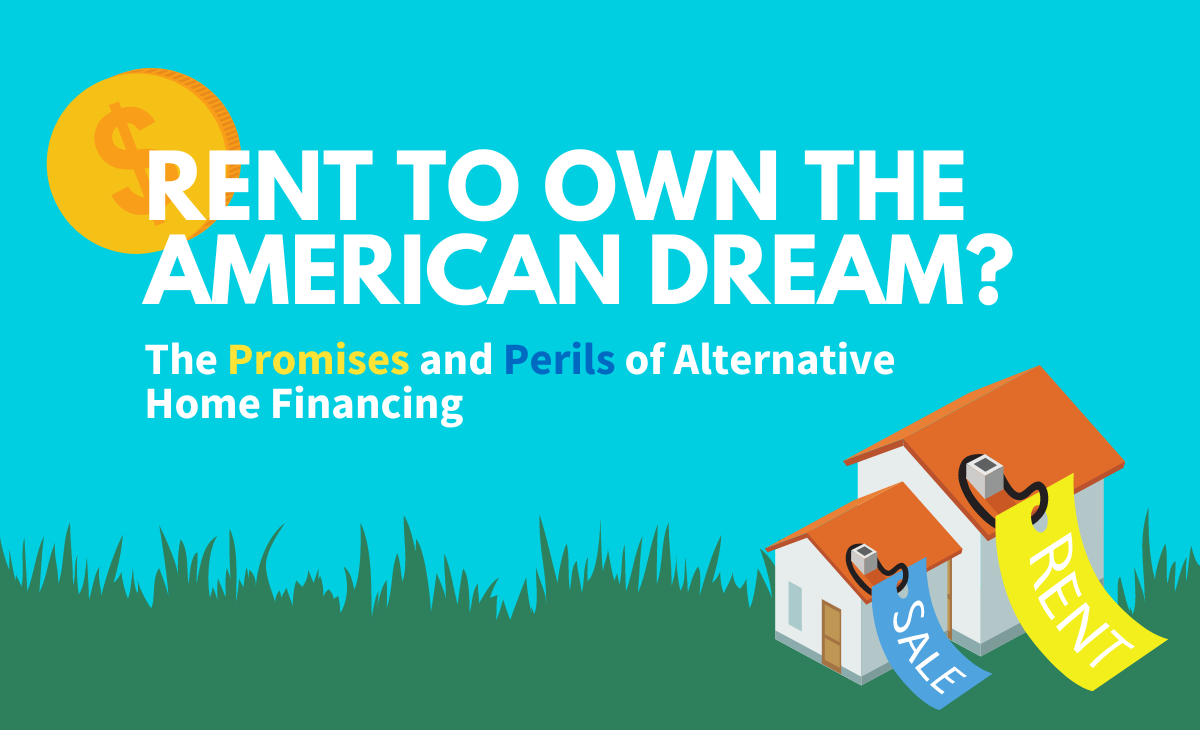Rent to Own the American Dream: Key Takeaways

The American Dream of owning a home is getting pushed out of reach for too many people. Low housing supply, skyrocketing interest rates, and corporate takeover of starter homes is making a perfect storm in which low- and middle-income people are getting priced out. In the face of tight budgets and limited housing options, many have looked to alternative pathways into homeownership.
Alternative Pathways to Homeownership
Rent-to-own companies offer an interesting approach to homeownership: instead of getting a traditional mortgage, you pay rent to the company that owns the house until you’ve made enough payments to own the home outright. While this new model promises to ease the path to homeownership, its predecessor contract for deed was more nefarious: it preyed on low-income Black and brown people who were redlined out of traditional loan opportunities. Can 21st-century guardrails make this new version actually beneficial to aspiring homeowners?
Examining Rent-to-Own Models
Our new paper explores the historical and ongoing effects of alternative financing starting with historically predatory contracts for deed (CFD) and moving into the modern rent-to-own (RTO) industry, the latter of which appears to rework a CFD-like product for better outcomes. We look at the offerings of six RTO companies, revealing how these practices work for real homebuyers and what needs to be done to ensure that they meaningfully expand homeownership.
In this research, we found that these practices vary widely—as do their success rates of customers successfully transitioning from renting to owning their homes. Rent-to-own companies report that only 38% to 50% of rent-to-own “buyers” actually convert to homeowners. This begs the question: is this alternative pathway actually working for low- and middle-income Americans?
Rent to own the American dream
Read the full paper from TechEquity here.
Key Takeaways
Don’t have time to read the paper? Here’s the gist of what we know about rent-to-own:
- In the face of an inaccessible housing market, would-be homeowners are turning to alternative home financing options such as rent-to-own; researchers estimate that 36 million buyers have purchased homes with alternative financing and that households earning less than $50,000 annually were most likely to use different forms of financing.
- Rent-to-own has roots in the longstanding practice known as “contracts for deed,” an alternative home financing model that preyed on Black and other nonwhite people in the 1950s and 1960s who were redlined out of traditional loan opportunities.
- While the current models of rent-to-own provide more support to buyers than historical contracts for deed, the agreements are complex and the model has pitfalls that may create harm and reinforce inequity in the housing market.
- Recommendations: In order to ensure rent-to-own models achieve their stated goal of increasing access to homeownership, and to avoid any potential predatory harms, we need to:
- Ensure that rent-to-own companies are implementing ethical corporate practices that support buyers, such as connecting them to third-party counseling; implementing good faith contract terms; and committing to public transparency of conversion rates, contract terms, and monthly payment increases.
- Enact state and federal regulations that protect buyers from bad actors, such as requiring that sellers record contracts with county registrars; that state agencies compile contracts and make aggregate data publicly available; that sellers transfer home titles when the buyer executes their option; and more.
The bottom line is that we need a stronger set of corporate practices and stricter regulatory oversight to make alternative financing a meaningful pathway into homeownership.
Want to Learn More?
This research is part of our Tech, Bias, and Housing Initiative where we examine potential harms and biases of tech in the housing space through comprehensive research, corporate practice, and public policy advocacy. Check out the page to learn more about the initiative and read our past research on tech bias in tenant screening and tech-driven housing financialization.





